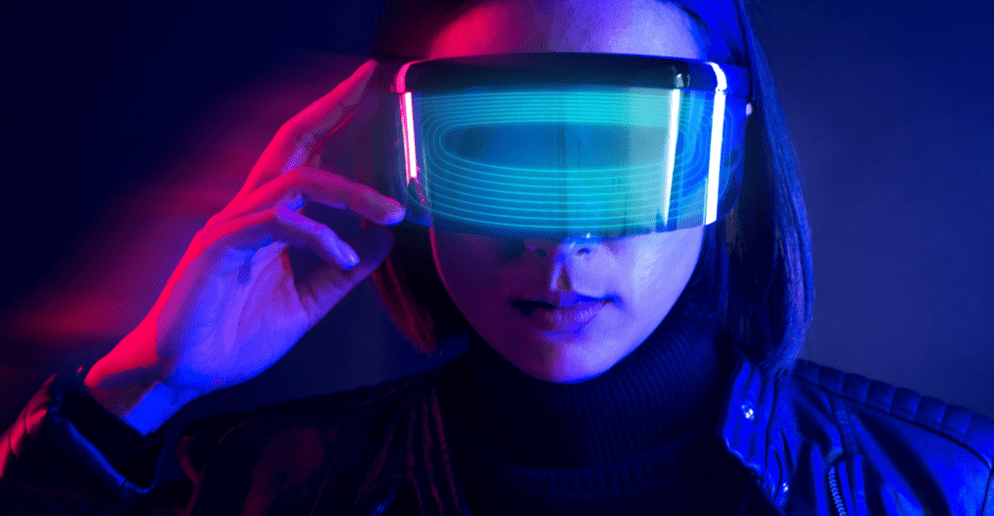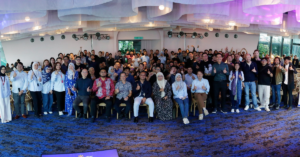Understanding How 3D AI Immersive Mixed Reality & Apple May Transform the Metaverse

One of the most significant changes in technology use for daily tasks is about to create major change for companies, enterprises, business leaders, and even consumers alike. The Metaverse’s immersive mixed reality technology is challenging the notion that any technology could have a greater impact than networked computers, the Internet, or even mobile computing, which was virtually unthinkable just a few short years ago.
Couple this with Apple’s recent entry into the virtual headset market, and companies in every industry have the chance to completely introduce new ways in which they design, produce, train staff, and build products on the manufacturing floor.
How Companies Will Leverage “Digital Twins”
The Metaverse is a virtual environment where people, consumers, and workers can come together to communicate, collaborate, and share through a virtual presence on any device. Knowledge workers and things are represented by “digital twins” in the Metaverse, which is being built by today’s IT leaders. This calls for businesses to create immersive virtual worlds, or metaverses, that will enable staff to virtually collaborate using their digital twins through chats, emails, video calls, and even in-person meetings.
Well-known companies like Microsoft, Accenture, and Facebook, which itself is now called Meta, are all paving the way toward this new reality of business, but there are companies working behind the scenes building immersive reality, modeling and simulation technologies that will ultimately power this new Metaverse.
What Companies Can Do with the Metaverse
The Metaverse enables people and professionals to interact with one another in an immersive experience once they are able to co-exist in a virtual environment where they exist as avatars, possibly even as holograms in the future. This implies that users of mixed-reality headsets like the HoloLens or Apple’s new headset as well as regular smartphones and laptops can access virtual settings from virtual meeting applications.
In one of the earlier enterprise-level buildouts, Accenture has been developing a “virtual campus” where its employees meet for coffee, parties, presentations and other virtual events. The company also leverages this virtual meeting space when onboarding new employees so they can build their virtual twins.
Modelling is at the center of powering the Metaverse
In this virtual Metaverse, digital twins based on modeling and simulation play a leading role. Simulation allows companies to take copies of the digital twin, run simulations on it and then identify optimizations that are too complex to find by monitoring the physical environment alone.
For enterprises and businesses leveraging the Metaverse, the power of simulation will be a game-changer in a variety of industries, such as optimizing production planning in the automotive sector, accelerating design in the aerospace sector, improving overall production efficiency for construction manufacturers, and increasing accuracy for consumer packaged goods companies. Many companies are poised to use virtual simulation to generate more revenue and make better business decisions.
Optimum immersive reality systems are needed to support ultra-realistic, high-fidelity digital twin visuals during the modeling and simulation process; precise fusion of the virtual on real world in a multi-platform environment and the ability to demonstrate a variety of realistic environments.
Along with Apple’s new headset, the Metaverse is a new kind of application which is enabled by tight integration between real and virtual worlds. The Metaverse is enabled by multitude of new technologies broadly in five groups as shown below:
Communications and computing infrastructure: Metaverse will need to perform large scale compute-heavy tasks, and access large databases to merge the real and virtual world.
Management Technology: Metaverse will need a lot of resources like energy, compute etc. This layer manages and allocates most optimum resources to run Metaverse.
Fundamental common technology: AI, Spatio-Temporal consistency are fundamental common technology for Metaverse.
Virtual Reality object connection: Metaverse will create 1:1 connection between real and virtual world objects and technologies like blockchain, and identity modeling will enable that.
Virtual Reality Space Convergence: Metaverse will fundamentally need a new medium to interact. AR/VR/MR, BCI, Gaming technologies will enable this.
The Metaverse is going to be important for all businesses, enterprises and consumers. Today, people and employees can only experience the internet when they log online on their computer or mobile device, but with new connectivity, devices and technologies powered by immersive mixed, we’ll be able to experience the internet all around every single day.
Apple has consistently concentrated on utilizing cutting-edge technologies to produce high-value products that ooze the brand’s promise of quality and sophistication over the past few decades. The company’s new headset has the potential to work in tandem with today’s top cloud-based 3D-AI mixed immersive platforms to assist enterprises and business in almost every industry change the way business is conducted, increasing overall efficiencies, lowering costs, and improving profit potential across the entire spectrum.
About The Author
Dijam Panigrahi is Co-founder and COO of GridRaster Inc., a leading provider of 3D AI cloud-based AR/VR platforms that power compelling high-quality AR/VR experiences on mobile devices for enterprises. For more information, please visit www.gridraster.com.
Source link
#Understanding #Immersive #Mixed #Reality #Apple #Transform #Metaverse





